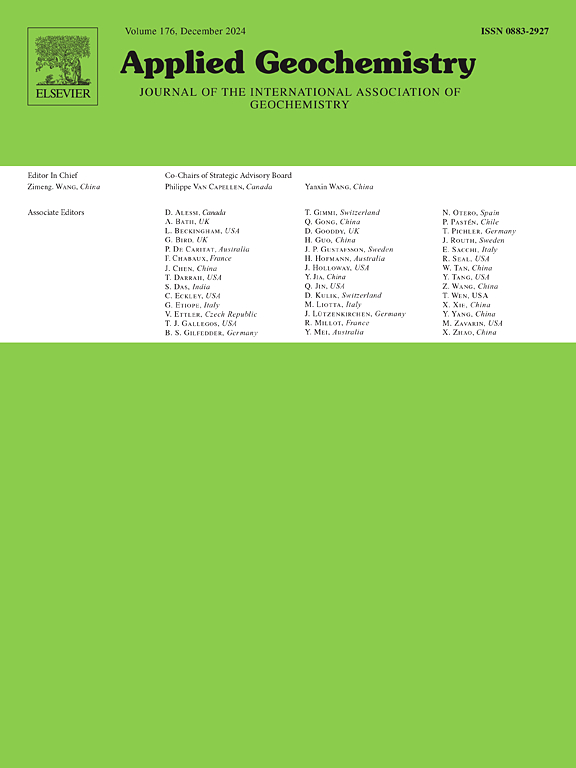Precise U–Pb chronology of tooth enamels of index fossils of Miocene fauna
IF 3.4
3区 地球科学
Q1 GEOCHEMISTRY & GEOPHYSICS
引用次数: 0
Abstract
Five fossil beds containing fossil specimens of Hipparion chiai, which is the most widespread index fossil in Late Miocene strata in northern China, were identified. The biological apatite (carbonated hydroxyapatite) in the teeth fossils of Hipparion chiai has a high μ value (initial 238U/204Pbi) and limited Th content. The fossilized tooth enamels remain relatively unchanged due to their resistance to diagenetic alterations. Here, for the first time, we precisely dated six fossil teeth of Hipparion chiai from the Wangdafuliang section in Fugu, Shaanxi Province, using the LA-ICP-MS U–Pb geochronology method. The U–Pb dates obtained from the six fossil teeth of Hipparion chiai range from 6.87 ± 0.13 Ma to 7.71 ± 0.39 Ma (2 s), with an average of 7.26 Ma. The ages of the tooth enamels of a Samotherium sp. and a Rhinocerotidae (genus and species unidentified) are consistent with the ages of the tooth enamels of the Hipparion chiai. The analytical method developed for this study provides a new benchmark for dating Neogene fossils.
中新世动物指示化石牙釉质的精确U-Pb年代学
鉴定出华北地区晚中新世地层中分布最广的指示化石——喜马马化石(Hipparion chiai)的5个化石层。柴海马牙齿化石中的生物磷灰石(碳酸羟基磷灰石)具有较高的μ值(初始值238U/204Pbi)和有限的Th含量。牙釉质化石由于其对成岩变化的抵抗力而保持相对不变。本文首次采用LA-ICP-MS U-Pb年代学方法,对陕西府谷王大富梁剖面中6具柴河马(Hipparion chiai)化石牙齿进行了精确测年。6个柴河马牙齿化石的U-Pb测年范围为6.87±0.13 Ma ~ 7.71±0.39 Ma (2 s),平均为7.26 Ma。Samotherium sp.和Rhinocerotidae(属和种均未确定)的牙釉质年龄与Hipparion chiai的牙釉质年龄一致。本研究建立的分析方法为新近系化石定年提供了新的基准。
本文章由计算机程序翻译,如有差异,请以英文原文为准。
求助全文
约1分钟内获得全文
求助全文
来源期刊

Applied Geochemistry
地学-地球化学与地球物理
CiteScore
6.10
自引率
8.80%
发文量
272
审稿时长
65 days
期刊介绍:
Applied Geochemistry is an international journal devoted to publication of original research papers, rapid research communications and selected review papers in geochemistry and urban geochemistry which have some practical application to an aspect of human endeavour, such as the preservation of the environment, health, waste disposal and the search for resources. Papers on applications of inorganic, organic and isotope geochemistry and geochemical processes are therefore welcome provided they meet the main criterion. Spatial and temporal monitoring case studies are only of interest to our international readership if they present new ideas of broad application.
Topics covered include: (1) Environmental geochemistry (including natural and anthropogenic aspects, and protection and remediation strategies); (2) Hydrogeochemistry (surface and groundwater); (3) Medical (urban) geochemistry; (4) The search for energy resources (in particular unconventional oil and gas or emerging metal resources); (5) Energy exploitation (in particular geothermal energy and CCS); (6) Upgrading of energy and mineral resources where there is a direct geochemical application; and (7) Waste disposal, including nuclear waste disposal.
 求助内容:
求助内容: 应助结果提醒方式:
应助结果提醒方式:


